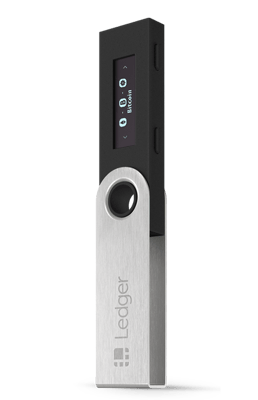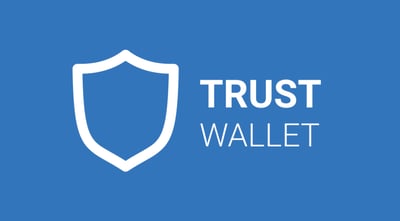The Ultimate A–Z Guide of Cryptocurrency (2025 Edition) October, 2025
Explore cryptocurrency from A to Z in this all-in-one guide. Learn the essentials of altcoins, wallets, DeFi, regulation, tokenomics, and cutting-edge tech like zero-knowledge proofs.
 Written by Nikolas Sargeant
Written by Nikolas Sargeant
| Börsen-Gebühren | Einzahlungsmethoden | |||||||||
|---|---|---|---|---|---|---|---|---|---|---|
| Name | Unterstützte Krypto-Währungen | Käufer-gebühr | Anbieter-gebühr | Auszahlungs-gebühren | Überweisung | Kreditkarte | Trading API | Aktiv seit | Offer | |

Binance
Centralized Exchanges
|
433 | 0.10% | 0.10% | 0.0002 | 2017 |
BIS ZU 100 USD WILLKOMMENSBONUS ERHALTEN
|
Besuchen | |||

Kraken
Centralized Exchanges
|
129 | 0.26% | 0.16% | 0.0002 | 2011 |
|
Besuchen | |||

Coinbase
Centralized Exchanges
|
136 | 2.00% | 2.00% | 0.000079 | 2012 |
GET USD 5 SIGN-UP BONUS!
|
Besuchen | |||

Curve Finance Exchange
Decentralized Exchanges
|
8 | 0.04% | 0.04% | 0.000079 | 2020 |
|
||||

PancakeSwap
Decentralized Exchanges
|
203 | 0.20% | 0.20% | 0.00041 | 2020 |
|
||||

Uniswap
Decentralized Exchanges
|
390 | 0.30% | 0.30% | 0.000079 | 2018 |
|
||||
Your complete guide to crypto concepts, from the basics of Bitcoin to the bleeding edge of zero-knowledge proofs.
A. Altcoins
The word “altcoin” simply means “any cryptocurrency that isn’t Bitcoin.” In the early days, this covered only a handful of projects like Litecoin or Ripple. Today, there are thousands. Some: like Ethereum, Solana, and Avalanche, are major smart contract platforms powering decentralized apps. Others are niche experiments, meme tokens, or outright scams.
Altcoins often market themselves as improving on Bitcoin: faster transactions, lower fees, or more advanced features. Many of them succeed in niches (DeFi, NFTs, payments), but the reality is that most altcoins never gain lasting adoption.
If you’re investing, the lesson is simple: treat altcoins as high-risk, high-reward. A few will grow into giants, many will fade into irrelevance. Understanding which is which takes careful research, not hype-chasing.
B. Blockchain
At its core, a blockchain is just a database, but with a twist. Instead of being stored on a single server, it’s distributed across thousands of computers (nodes). Each new entry, or “block,” is linked to the one before it with cryptography, forming an immutable chain of data.
Why does this matter? Because it allows strangers to coordinate without trusting a central authority. Bitcoin uses it for money transfers, Ethereum for programmable contracts, and countless other projects for voting, supply chains, or identity systems.
The genius of blockchain isn’t speed (Visa still clears transactions faster). It’s trustlessness: the idea that you don’t need to rely on a bank, government, or company to ensure that a transaction is valid. The network itself enforces the rules.
C. Custody
In crypto, “custody” refers to who controls your coins. There are two main approaches:
- Custodial: an exchange like Coinbase or Binance holds your assets on your behalf. This is convenient but risky, if the exchange is hacked or freezes withdrawals, you’re stuck.
- Self-custody: you hold your own private keys, usually in a wallet app or hardware device. This is safer, but puts the responsibility squarely on you. Lose your keys, and no one can help you recover them.
Institutions often use custodians like Anchorage or Fireblocks to store assets with added security. For individuals, the golden rule is: “Not your keys, not your coins.” If you don’t control the keys, you don’t truly own the crypto.
D. DeFi (Decentralized Finance)
DeFi is one of the biggest revolutions in crypto. It refers to financial services, like lending, borrowing, trading, and insurance, built entirely on blockchain networks. Instead of banks or brokers, smart contracts do the work.
Examples include:
- DEXs (Decentralized Exchanges) like Uniswap, where users swap tokens peer-to-peer.
- Lending protocols like Aave or Compound, where you can earn interest or borrow crypto.
- Stablecoin-backed savings accounts, where yield comes from lending pools.
DeFi is exciting because it’s global, open to anyone with an internet connection, and operates 24/7. But it’s also risky. Smart contracts can have bugs, liquidity can dry up, and regulators are circling. For users, DeFi represents both freedom and fragility.
E. Exchanges
Exchanges are the entry point for most people. They’re platforms where you can buy, sell, and trade crypto. There are two main types:
- Centralized exchanges (CEXs) like Binance, Coinbase, and Kraken. They’re easy to use, support fiat deposits, and offer advanced features like margin trading. The downside: you don’t control your coins while they’re on the platform.
- Decentralized exchanges (DEXs) like Uniswap, Curve, or PancakeSwap. These run on smart contracts, allowing users to trade directly from their wallets. They’re non-custodial but often have higher fees and less intuitive interfaces.
Most beginners start on a CEX for simplicity, then graduate to DEXs once they’re comfortable managing wallets and gas fees.
F. Fiat On-Ramps
A fiat on-ramp is the bridge between the traditional financial system and crypto. Services like Coinbase, Kraken, and MoonPay let you use credit cards, bank transfers, or even PayPal to buy your first coins. Without them, you’d be stuck in a purely crypto-to-crypto world.
On-ramps also go in reverse. Off-ramps allow you to convert crypto back into dollars, euros, or pounds. Some countries restrict these heavily, which is why peer-to-peer marketplaces (like LocalBitcoins back in the day, or Binance P2P now) remain popular.
On-ramps are heavily regulated because they’re where crypto meets government money. Expect to go through KYC (identity checks) and sometimes face limits or freezes. But they remain essential for mainstream adoption, after all, almost no one earns their salary directly in crypto.
G. Gas Fees
If you’ve ever tried sending Ethereum or interacting with a DeFi app, you’ve run into gas fees. Gas is the cost you pay to use a blockchain. On Ethereum, every transaction, whether it’s sending ETH, minting an NFT, or swapping on Uniswap, requires computational work from the network’s validators. Gas fees compensate them for that work.
The price of gas is measured in gwei (a tiny fraction of ETH), and it fluctuates depending on how busy the network is. During bull markets or NFT hype, gas can skyrocket, making small transactions prohibitively expensive.
Solutions include Layer 2 scaling networks like Arbitrum, Optimism, or zkSync, which batch transactions off-chain and settle them on Ethereum for lower costs. Other blockchains like Solana and Avalanche also compete on low-fee models.
Understanding gas is key: it explains why some chains are more user-friendly and why scaling is crypto’s never-ending challenge.
H. Hashing
Hashing is the cryptographic backbone of blockchain technology. A hash function takes any input (a text, file, or transaction) and produces a fixed-length string of numbers and letters. For example, Bitcoin’s SHA-256 algorithm turns “hello” into an apparently random 64-character string.
In blockchains, hashing ensures:
- Integrity: if even one character changes in a block, its hash changes completely, making tampering obvious.
- Security: miners solve complex hash puzzles to add blocks (proof-of-work).
- Privacy: passwords, keys, and addresses are stored as hashes, not raw data.
Mining essentially boils down to running trillions of guesses through a hash function until one fits the required pattern. It’s energy-intensive, but it makes Bitcoin’s history almost impossible to rewrite.
I. ICOs, IDOs, and IEOs
Crypto has its own fundraising language:
- ICO (Initial Coin Offering): the 2017 craze where projects sold tokens directly to the public, often with little oversight. Billions were raised, but scams and failures were rampant.
- IEO (Initial Exchange Offering): tokens launched through exchanges like Binance Launchpad, adding some credibility since the exchange vets them.
- IDO (Initial DEX Offering): the DeFi version, where tokens launch directly on decentralized exchanges.
These models democratized fundraising but also attracted fraud. Today, regulations are stricter, and investors are warier. Still, token launches remain a hallmark of crypto innovation, and speculation.
J. Jargon Busting
Crypto is full of slang, memes, and acronyms that can feel like a secret language. A few essentials:
- HODL: A typo of “hold,” now a badge of honor for long-term believers.
- FOMO: Fear of Missing Out — what drives people to buy tops.
- FUD: Fear, Uncertainty, Doubt — often used to dismiss negative news.
- Whales: Large holders who can move markets with a single trade.
- Rug Pull: A scam where project founders vanish with investor funds.
- DYOR: “Do Your Own Research” — the community’s favorite disclaimer.
Knowing the lingo helps you read forums, follow Twitter, and not get lost in conversations. More importantly, recognizing terms like “rug pull” or “pump-and-dump” can save you from falling into common traps.
K. Keys (Public & Private)
Crypto ownership boils down to two strings of code: your public key (like your bank account number) and your private key (like your PIN or password, but way more sensitive).
- Public key/address: This is what you share to receive funds. Anyone can see it, and it’s safe to give out.
- Private key: This is what gives you control over your coins. If someone has your private key, they can spend your crypto.
Most wallets today make it simpler by using a seed phrase, a list of 12 or 24 words that represent your private keys. Lose that phrase, and you lose access forever.
The rule is simple: never share your private key or seed phrase. Exchanges, airdrops, or “support staff” asking for it are always scams. Your keys are your crypto.
L. Layers (Layer 1 vs Layer 2)
You’ll often hear people talk about Layer 1 and Layer 2 blockchains.
- Layer 1 (L1): These are base networks like Bitcoin, Ethereum, Solana, or Avalanche. They handle transactions directly and set the main rules.
- Layer 2 (L2): These are scaling solutions built on top of L1s to reduce congestion and fees. Examples include Optimism and Arbitrum on Ethereum.
Think of it like a highway system: Layer 1 is the main road, Layer 2 is an express lane built above it to handle overflow. Both are connected, but L2 is faster and cheaper.
This distinction is crucial because it explains why Ethereum remains expensive but secure, and why scaling solutions are such a big focus for crypto’s future.
M. Mining & Staking
How do blockchains stay secure? Two main systems dominate:
- Mining (Proof-of-Work): Used by Bitcoin. Miners run computers that solve math puzzles, validating transactions and earning rewards. It’s energy-intensive but extremely secure.
- Staking (Proof-of-Stake): Used by Ethereum (post-Merge), Solana, Avalanche, and many others. Instead of energy, validators “stake” coins as collateral. Honest behavior earns rewards; dishonest actions risk losing the stake.
Mining is like running a power-hungry lottery. Staking is more like putting money in a locked vault to vouch for your honesty. Both aim to prevent fraud, but staking is faster and greener, which is why most new chains use it.
N. NFTs (Non-Fungible Tokens)
NFTs exploded in 2021 with million-dollar sales of pixel art, but they’re more than just digital collectibles. An NFT is a unique token on a blockchain that proves ownership of a specific item, whether that’s art, music, tickets, in-game items, or even property deeds.
Key features:
- Non-fungible means each token is unique, unlike Bitcoin where every coin is interchangeable.
- Smart contracts attach metadata, like the artist’s signature or resale royalties.
- Ownership is transparent and transferable on-chain.
Critics argue NFTs are speculative bubbles. Supporters see them as a new way to track ownership in the digital age. The truth is likely somewhere in between: while the hype cycles come and go, the underlying idea of provable digital ownership is here to stay.
O. Oracles
Blockchains are powerful, but by themselves they’re closed systems. They don’t know the price of ETH in dollars, the weather in London, or who won last night’s football game. That’s where oracles come in.
An oracle is a service that feeds real-world data into a blockchain so smart contracts can react to it. For example:
- A DeFi lending platform needs oracles to track token prices for collateral.
- An insurance smart contract may need weather data to trigger payouts.
- Sports betting dApps require match results to settle bets.
The most widely used oracle network is Chainlink, which aggregates multiple data sources to avoid manipulation. Without oracles, most smart contracts would be blind to the outside world. With them, blockchains can interact with real-world events.
P. Privacy Coins
Bitcoin is often thought of as anonymous, but in reality it’s pseudonymous, every transaction is public on the blockchain. Privacy coins go further by obscuring transaction details.
The two most well-known are:
- Monero (XMR): Uses advanced cryptography (ring signatures, stealth addresses) to make transactions untraceable.
- Zcash (ZEC): Offers optional privacy with zk-SNARKs, allowing transactions to be shielded.
Privacy coins are controversial. Supporters argue they protect financial freedom and personal security. Critics, including regulators, worry they enable money laundering and crime. As a result, many exchanges have delisted them. Still, privacy remains a hot topic in crypto’s future.
Q. Quadratic Voting & Governance
Decentralized projects often use governance tokens that let holders vote on upgrades or policies. The challenge? If one whale owns most of the tokens, they control the system. Quadratic voting is a proposed fix.
Here’s how it works: instead of each token = one vote, the cost of casting multiple votes grows quadratically. For example:
- 1 vote costs 1 token.
- 2 votes cost 4 tokens.
- 3 votes cost 9 tokens.
This means large holders can still have more influence, but not overwhelmingly so. Smaller holders get a stronger collective voice. Some DAOs experiment with quadratic voting, but it’s not yet widespread. It highlights the ongoing struggle of making governance both fair and efficient.
R. Regulation
If there’s one topic shaping crypto’s future, it’s regulation. Governments around the world are trying to figure out how to integrate crypto into existing systems without stifling innovation.
- United States: The SEC argues many tokens are securities, leading to lawsuits against exchanges and projects. Congress is still debating clear rules.
- European Union: The MiCA framework (Markets in Crypto-Assets) provides a comprehensive set of rules for stablecoins, exchanges, and token issuers.
- Other regions: Some, like Singapore and Dubai, are embracing crypto with clear licensing regimes. Others, like China, ban trading outright but still explore central bank digital currencies (CBDCs).
For users, regulation means more compliance (KYC checks, reporting taxes) but also more protections. The big unknown: can regulators keep up with innovation, or will crypto outpace their control?
S. Stablecoins
Stablecoins are cryptocurrencies designed to hold a steady value, usually pegged to the U.S. dollar. They’re essential for trading, payments, and DeFi, since most crypto assets are too volatile to use as everyday money.
The main types are:
- Fiat-collateralized: Backed by cash or cash-equivalents. Examples: USDC, USDT.
- Crypto-collateralized: Backed by crypto held in smart contracts, often overcollateralized. Example: DAI.
- Algorithmic: Use code to expand or contract supply to maintain the peg. Terra’s UST was the most famous, and its 2022 collapse showed how risky this design can be.
Stablecoins sit at the heart of the crypto economy, but also under the microscope of regulators who worry about financial stability.
T. Tokenomics
Every token has rules governing its supply, distribution, and incentives. Together, these rules form its tokenomics, the economic design of the project.
Key elements include:
- Supply: Fixed (like Bitcoin’s 21M cap) or inflationary (like Ethereum).
- Distribution: How tokens are allocated (founders, investors, community).
- Utility: What the token is used for (governance, payments, collateral).
- Incentives: Mechanisms like staking rewards or burns to encourage behavior.
Bad tokenomics (like unlimited supply with no demand) doom many projects. Good tokenomics balance scarcity with usefulness, aligning incentives for users, developers, and investors.
U. Utility Tokens vs Securities
Not all tokens are created equal. The crypto world often divides them into utility tokens and securities:
- Utility tokens: Give access to a product or service. Example: using ETH to pay gas on Ethereum, or BNB for Binance discounts.
- Security tokens: Represent ownership or investment in a project, similar to stocks. Regulators often argue many ICO-era tokens were unregistered securities.
This distinction matters because securities fall under strict laws. The gray area between utility and security is where many legal battles in crypto are fought today. For users, it’s a reminder: just because something’s called a “utility token” doesn’t mean regulators agree.
V. Validators
In proof-of-stake systems, validators replace miners. They’re responsible for confirming transactions, adding blocks, and keeping the network secure. To participate, validators must “stake” tokens as collateral, usually thousands or even millions of dollars’ worth.
Validators earn rewards for honest work and risk losing their stake if they act maliciously. The more tokens staked, the more secure the network, but also the more centralized it can become, as only large players can afford to run validators directly.
For everyday users, staking through validators offers passive income. You delegate your tokens to a validator, they do the work, and you share the rewards. Just choose carefully: bad validators can reduce your returns or even get penalized.
W. Wallets
A crypto wallet is where you store and manage your coins and tokens, but it doesn’t actually “hold” them. Instead, it holds your private keys, which grant you access to your assets on the blockchain.
Types of wallets:
- Hot wallets: Software apps like MetaMask or Trust Wallet. Convenient but always connected to the internet, making them more vulnerable.
- Cold wallets: Hardware devices like Ledger or Trezor. They store keys offline, offering stronger security.
- Multisig wallets: Require multiple approvals to move funds. Popular with DAOs and companies.
Choosing the right wallet depends on your needs. For everyday use, a hot wallet is fine. For long-term storage, cold wallets are the gold standard. And remember: lose your seed phrase, lose your coins forever.
X. XBT (Ticker for Bitcoin)
While most people use the ticker BTC for Bitcoin, you’ll sometimes see XBT on exchanges or in financial reports. Why? It comes from ISO 4217, the international standard for currency codes.
According to ISO rules, if a currency isn’t tied to a specific country, it starts with “X” (like XAU for gold, XAG for silver). Since Bitcoin isn’t issued by any nation, XBT fits the standard.
In practice, BTC is far more common, especially in retail apps and trading platforms. But don’t be confused, XBT and BTC are the same thing.
Y. Yield
One of crypto’s biggest attractions is the promise of yield, earning passive income from your assets. Ways to earn yield include:
- Staking: Locking tokens to secure a proof-of-stake network.
- Lending: Supplying coins to lending protocols like Aave or Compound.
- Liquidity providing: Putting assets in DEX pools and earning trading fees.
Yields can range from modest (4–6% on stablecoins) to outrageous (100%+ on risky farms). The catch? High yields often mean high risk. Protocols can be hacked, tokens can collapse, and rewards can dry up overnight. In crypto, yield is never “free money”, it’s compensation for the risk you’re taking.
Z. Zero-Knowledge Proofs
The alphabet ends with one of the most exciting frontiers in blockchain tech: zero-knowledge proofs (ZKPs). A ZKP lets someone prove they know a piece of information without revealing the information itself.
In crypto, this has huge implications:
- Privacy: Users can prove they have funds or met conditions without exposing details.
- Scalability: ZK rollups (like zkSync or StarkNet) bundle thousands of transactions and prove them on Ethereum with a single ZKP.
- Security: ZKPs reduce reliance on trust by letting math do the verifying.
ZK tech is complex but transformative. It promises a future where blockchains are both private and scalable, something once thought impossible.
Wrapping Up
That’s the A–Z of Cryptocurrency (2025 Edition): from Altcoins to Zero-Knowledge Proofs, we’ve covered the key ideas, tools, and debates that shape the industry today.
Crypto is vast, fast-moving, and often confusing. But with a structured foundation, the jargon clears up, the risks become visible, and the opportunities come into focus. Whether you’re here to invest, build, or just stay informed, understanding these core concepts will keep you ahead of 90% of newcomers.
| Börsen-Gebühren | Einzahlungsmethoden | |||||||||
|---|---|---|---|---|---|---|---|---|---|---|
| Name | Unterstützte Krypto-Währungen | Käufer-gebühr | Anbieter-gebühr | Auszahlungs-gebühren | Überweisung | Kreditkarte | Trading API | Aktiv seit | Offer | |

Binance
Centralized Exchanges
|
433 | 0.10% | 0.10% | 0.0002 | 2017 |
BIS ZU 100 USD WILLKOMMENSBONUS ERHALTEN
|
Besuchen | |||

Kraken
Centralized Exchanges
|
129 | 0.26% | 0.16% | 0.0002 | 2011 |
|
Besuchen | |||

Coinbase
Centralized Exchanges
|
136 | 2.00% | 2.00% | 0.000079 | 2012 |
GET USD 5 SIGN-UP BONUS!
|
Besuchen | |||

Curve Finance Exchange
Decentralized Exchanges
|
8 | 0.04% | 0.04% | 0.000079 | 2020 |
|
||||

PancakeSwap
Decentralized Exchanges
|
203 | 0.20% | 0.20% | 0.00041 | 2020 |
|
||||

Uniswap
Decentralized Exchanges
|
390 | 0.30% | 0.30% | 0.000079 | 2018 |
|
||||




